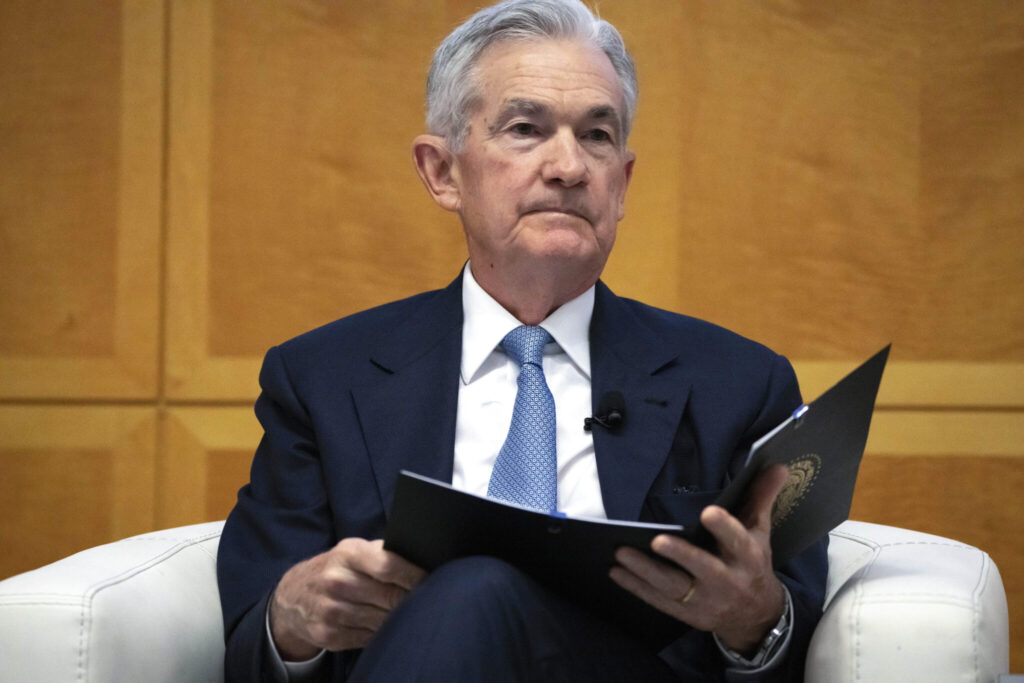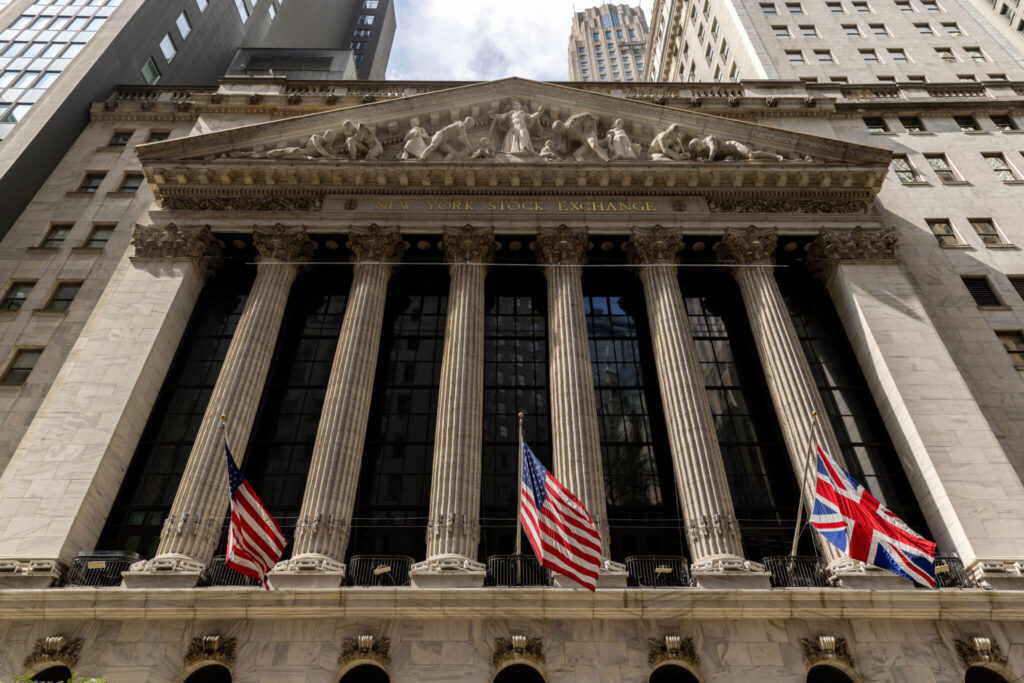Wall Street is drifting Tuesday after a report showed inflation in the United States is behaving pretty much as expected. The S&P 500 was 0.3% lower in early trading, a day after hitting a 20-month high. The Dow Jones Industrial Average was down 12 points, or less than 0.1%, as of 9:40 a.m. Eastern time, and the Nasdaq composite was 0.2% lower.
Quick Read
- Mild Market Movements: The S&P 500 experienced a slight decline of 0.3% in early trading, following a 20-month high. The Dow Jones Industrial Average was down marginally by less than 0.1%, and the Nasdaq composite dropped 0.2%.
- Oracle’s Stock Tumble: Oracle’s stock fell significantly, by 10.5%, after its quarterly revenue failed to meet analysts’ expectations.
- AstraZeneca’s Acquisition of Icosavax: Icosavax’s shares soared by 46.9% following AstraZeneca’s announcement to purchase the biopharmaceutical company for a minimum of $838 million, potentially more based on specific achievements.
- Focus on Inflation Report: The inflation report revealed that U.S. consumer prices were 3.1% higher than the previous year, a slight decrease from October’s 3.2%. This figure aligned with economists’ predictions.
- Federal Reserve’s Expected Decision: The Federal Reserve is anticipated to maintain its main interest rate, following a series of increases from near zero to over 5.25% since last year.
- Fed’s Balancing Act: The Fed aims to moderate high inflation without causing a significant recession, a challenge often referred to as achieving an “immaculate” landing.
- Expectations of Future Rate Cuts: There’s growing optimism that the Fed might reduce interest rates in 2024, potentially as early as March.
- Investor Reactions to Inflation Data: Despite the inflation report, some traders are adding bets for a March rate cut, while others speculate that high rates might persist.
- Comments from Experts: Analysts like Seema Shah note a slight acceleration in month-over-month inflation, indicating that the deceleration might not be sufficient to support market expectations for policy easing.
- Fed Chair’s Stance: Federal Reserve Chair Jerome Powell has indicated that it’s premature to discuss potential rate cuts.
- Steady Treasury Yields: The 10-year Treasury yield remained fairly stable, with a minor drop to 4.23%, while the two-year yield, more sensitive to Fed actions, increased slightly to 4.73%.
- International Market Trends: European markets showed mixed results, with the FTSE 100 in London rising marginally. In Asia, most markets trended upward.
- Wage Growth Impact on Inflation: The Office for National Statistics reported a notable slowdown in wage growth in the UK, which could influence the Bank of England’s upcoming interest rate decision.
- Decline in Crude Oil Prices: Crude oil prices dropped, with U.S. benchmark crude falling 3% to $69.20 per barrel and Brent crude decreasing by 2.9% to $73.82, potentially easing inflation pressures.
The Associated Press has the story:
Wall Street drifts after inflation report and before Fed’s next decision
Newslooks- NEW YORK (AP)
Wall Street is drifting Tuesday after a report showed inflation in the United States is behaving pretty much as expected.
The S&P 500 was 0.3% lower in early trading, a day after hitting a 20-month high. The Dow Jones Industrial Average was down 12 points, or less than 0.1%, as of 9:40 a.m. Eastern time, and the Nasdaq composite was 0.2% lower.
Tech giant Oracle’s stock tumbled 10.5% after its revenue for the latest quarter fell short of analysts’ forecasts. Icosavax jumped 46.9% after AstraZeneca said it would buy the biopharmaceutical company for at least $838 million in cash, with the price tag rising if certain milestones are met.
But Wall Street’s spotlight was on the inflation report, which showed U.S. consumers paid prices for gasoline, food and other living costs last month that were 3.1% higher than a year earlier. That was a slight deceleration from October’s 3.2% inflation and exactly in line with economists’ expectations.

The data likely changes nothing about what the Federal Reserve will do at its latest meeting on interest rates, which ends Wednesday. The widespread expectation is still for the Fed to keep its main interest rate steady.
The Fed has already drastically yanked its main interest rate from virtually zero early last year to more than 5.25%, its highest level since 2001. It’s hoping to slow the economy and hurt investment prices by exactly the right amount: enough to stamp out high inflation but not so much that it causes a steep recession.
Recently rising hopes that the Fed can manage such an “immaculate” landing for the economy have helped stocks to rally and bets to rise that the Fed’s next move on interest rates will be to cut sometime in 2024, perhaps as early as March.
Cuts to interest rates can juice prices for stocks and other investments, while offering more oxygen for the overall economy and financial system.

Following the inflation report, traders added a handful of bets for a cut to happen by March, according to data from CME Group. But a small minority are also still betting on the possibility that rates could stay high for longer than expected.
Seema Shah, chief global straregist at Principal Asset Management, pointed to a slight acceleration in inflation when looking at how prices changed from October into November rather than from a year earlier.
“Simply put,” she said, “this isn’t enough inflation deceleration to reassert or justify the market’s policy easing expectations,” particularly when the job market remains solid.

Other analysts and investors said they expect Fed Chair Jerome Powell to use the numbers to try to push back on traders’ growing conviction that rate cuts will come in the first half of 2024. Powell himself has already recently said that it’s too early to consider when cuts could arrive.
In the bond market, Treasury yields were holding relatively steady. The 10-year Treasury yield slipped to 4.23% from 4.24% late Monday.
The two-year yield, which moves more on expectations for action from the Fed, rose to 4.73% from 4.71%.
In stock markets abroad, indexes were mixed in Europe and mostly higher in Asia.
The FTSE 100 in London added 0.1% after the Office for National Statistics reported a sharp slowdown in growth for wages. That could help weigh on inflation and shape the Bank of England’s upcoming decision on interest rates Thursday.
Crude oil prices fell to take some more pressure off inflation. A barrel of benchmark U.S. crude lost 3% to $69.20. It had been above $93 in September but has been coming down amid worries about demand from the global economy failing to keep up with available supplies.
Brent crude, the international standard, fell 2.9% to $73.82 per barrel.







